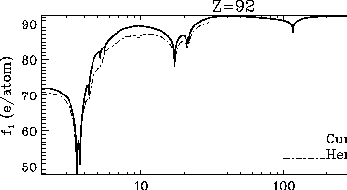|
|
Christopher T. Chantler, Associate Professor & Reader
|
|

Who am I?
Associate Professor & Reader in Physics at The University of Melbourne.

Optics Group, School of Physics (Room 505) University of Melbourne, Victoria, 3010, AUSTRALIA
Phone: +61 (0)3 8344 5437 (Office, Room 505, 5th floor) +61 (0)3 8344 0015 (X-ray Lab, Room 560, 5th floor)
Fax: +61 (0)3 9347 4783 URL: http://optics.ph.unimelb.edu.au/~chantler

Chair, Science Faculty Library Users Committee 1999-
Member, Australian Institute of Physics 1992- [Graduate AIP 1984-1991]
Member, Optical Society of America 1993-
Member, American Institute of Physics 1993-
Member, Australian Optical Society 1994-
Associate Editor, Australian Optical Society News 1995-
Member, Australian Optical Society (AOS) Council 1996-
Australian Crystallographic Association, 1999-
International Radiation Physics Society, 1999-
Hollywood Senior High School, Perth, Western Australia 1975 - 1979.
BSc (Hons) University of Western Australia 1980 - 1984.
D. Phil. Exeter College, Oxford University 1985 - 1990.
Prizes:
Digby-Fitzhardinge Memorial Prize for Physics (UWA) 1982.
Lady James Prize (Physical Science, UWA) 1983 (shared)
Shell Australia Postgraduate Scholarship for Science and Engineering 1985-88
St Anne's College Drapers' Company Junior Research Fellowship October 1989-1991
Lindemann Fellowship of the English-Speaking Union of the Commonwealth 1991-1992

Research Fields
I have pursued precision tests of Quantum Electrodynamics in atomic
systems, and in a series of international collaborations have produced
several high-precision measurements of QED in the medium-to-high Z
regime. I have been involved in the development of X-ray specroscopy on
the novel Electron Beam Ion Trap devices, in collaborations primarily at NIST.
I have worked on few-electron physics for 15 years.
Investigation of new structure in atomic systems has continually developed our
understanding of physics and quantum phenomena. One of the goals of much current
research is to test Quantum Electro-Dynamics (QED) critically in new and important
regimes. Some areas of parallel investigations include exotic atoms like muonium,
and positronium, and some investigations have involved g-2 experiments in different
systems. Most effort has been directed to Lamb shift measurements in hydrogenic and
helium-like systems. A significant realisation of recent years is that these
complementary endeavours are investigating different
fundamental issues and making major additional contributions to different fields.

Some of our theoretical developments in the computation of form factors
have resulted in significant deviations from earlier work, which can be
tested by suitable experiments. They have been confirmed in selected regions.
Atomic form factors determine photoelectric cross-sections, elastic and inelastic
scattering cross-sections and X-ray (Bragg-Laue) coherent diffraction profiles.
Major discrepancies exist between theory and experiment. Reliable knowledge of these
factors is required for conventional fields such as crystallography and radiography,
and also for the new fields of X-ray Anomalous Fine Structure (XAFS) and
Multiple-wavelength Anomalous Dispersion (MAD).
Here the atomic scattering factor is given for Uranium at medium X-ray
energies (keV). Click the figure for the corresponding attenuation coefficients.
The way that X-rays interact with matter should be well understood.
However, deviations between latest theoretical computations lies at the 10%
level over much of the energy ranges, for most elements. Even for the most
investigated elements such as Si, Cu, Ag, Au, the few experiments which
claim 1% precision show variation of 5-30%. We are addressing this with
synchrotron experiments and with state-of-the-art facilities at the
University of Melbourne.
Current indications suggest results of 0.01% precision and 0.2%-0.3% accuracy - an
improvement of two orders of magnitude over previous work.
We have the first prototype 18kW CE high-frequency rotating anode in the
world, plus several other features suited to X-ray physical investigations.
These issues impact upon X-ray diffraction theory. My diffraction theory
is the first dynamical theory for non-ideally imperfect curved crystals
(and simpler subclasses) and shows significantly greater agreement for
perfect curved crystal profiles than previous work.
The X-ray interaction with photographic emulsions is an interesting application of
ideas from basic physics.
Other areas of interest and development include application to ion chamber
optimisation and 2-dimensional (backgammon) proportional counters.
References identify the major contributions from this work.
Applications of these ideas have led to new calibration devices for
radiography and mammography, now patented in the US as part of the Quantum
Metrology Group effort in the Atomic Physics Division
at the National Institute for Standards and Technology, USA.
You may have seen me...
In Perth, U.W.A., Western Australia; in the Clarendon Laboratory, Oxford,
U.K.; at the Quantum Metrology Division & EBIT Group, Atomic Physics Division,
N.I.S.T, Gaithersburg, Maryland,
USA; GSI, Darmstadt, Germany; LBL, Berkeley, California; APS, Chicago; ANBF, Tsukuba, Japan...
As at February 2003, I have published some 53 fully refereed scholarly papers, or some 136
papers/reports/conference presentations

Chris. Chantler, chantler@ph.unimelb.edu.au
Last modified: February 2003
Copyright © 2003 The University of Melbourne





